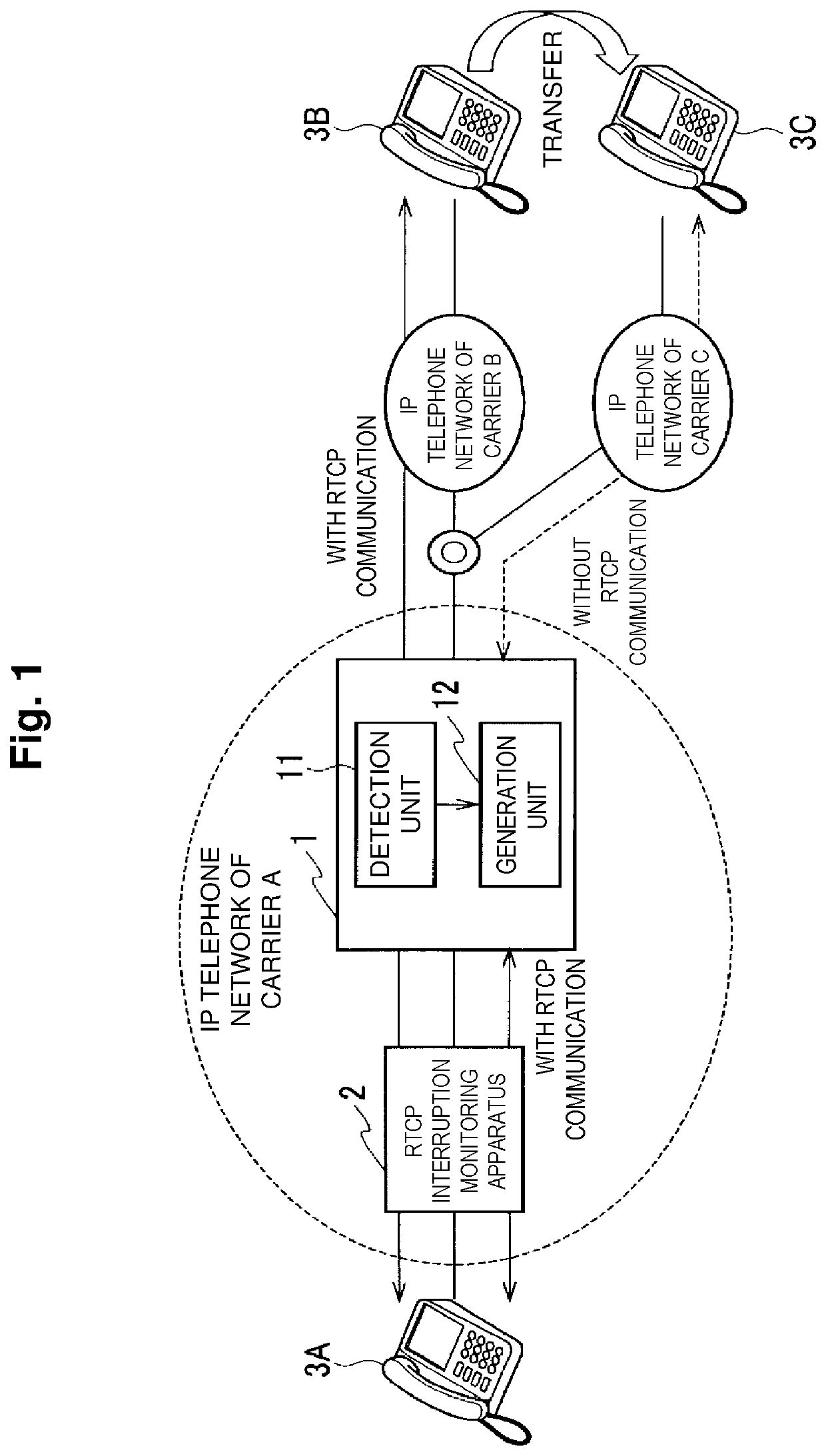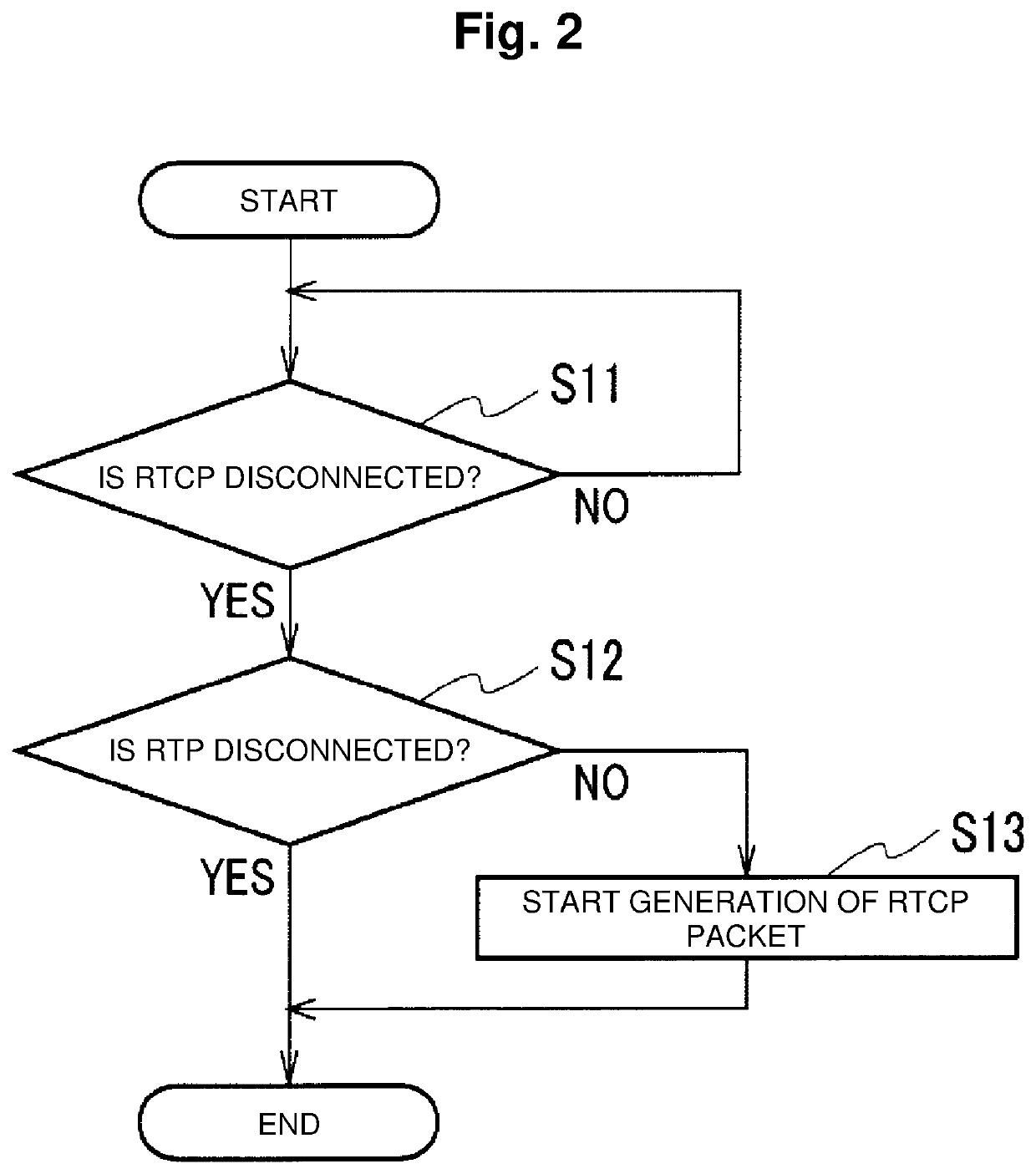Gateway device and monitoring method
- Summary
- Abstract
- Description
- Claims
- Application Information
AI Technical Summary
Benefits of technology
Problems solved by technology
Method used
Image
Examples
first embodiment
[0027]FIG. 1 is an overall configuration diagram including a gateway device in a first embodiment. In an IP phone network of a carrier A, a gateway device 1 installed on a POI (Point Of Interface) among IP phone networks of carriers A, B and C, and an RTCP interruption monitoring device 2 that performs interruption monitoring of RTCP.
[0028]The gateway device 1 is provided with a detection unit 11 and a generation unit 12. Each unit that the gateway device 1 is provided with may be configured with a computer provided with a processor, a storage device and the like, and a process of each unit may be executed by a program. This program is stored in the storage device that the gateway device 1 is provided with, and it is also possible to record the program to a recording medium such as a magnetic disk, an optical disk and a semiconductor memory or provide the program through a network.
[0029]For certain communication, the detection unit 11 starts monitoring of RTP / RTCP packets, being tri...
second embodiment
[0048]A gateway device 1 of a second embodiment is different from the first embodiment in that a generation unit 12 generates a call control signal and transmits the call control signal to the RTCP interruption monitoring device 2 without generating RTCP packets.
[0049]In the case of intermittently receiving RTP packets though reception of RTCP packets is stopped, the generation unit 12 transmits a call control signal showing that media transfer by RTP packets is continued, to the RTCP interruption monitoring device 2.
[0050]When receiving the call control signal showing that media transfer is continued, from the gateway device 1, the RTCP interruption monitoring device 2 operates to stop interruption monitoring or inhibiting call disconnection after detection of interruption.
[0051]While continuously receiving RTP packets, the gateway device 1 may periodically transmit a call control signal showing that media transfer is continued.
[0052]A detection unit 11 monitors RTP packets even af...
PUM
 Login to View More
Login to View More Abstract
Description
Claims
Application Information
 Login to View More
Login to View More - R&D
- Intellectual Property
- Life Sciences
- Materials
- Tech Scout
- Unparalleled Data Quality
- Higher Quality Content
- 60% Fewer Hallucinations
Browse by: Latest US Patents, China's latest patents, Technical Efficacy Thesaurus, Application Domain, Technology Topic, Popular Technical Reports.
© 2025 PatSnap. All rights reserved.Legal|Privacy policy|Modern Slavery Act Transparency Statement|Sitemap|About US| Contact US: help@patsnap.com


